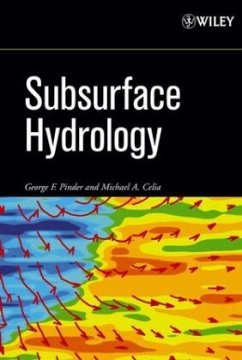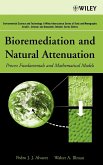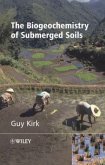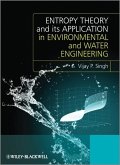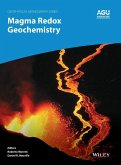Groundwater hydrology-the study of the occurrence, distribution, and movement of water beneath the earth's surface-involves concepts from a number of traditional sciences, including geology, soil science, physics, chemistry, and biology. Examining water movement as well as the movement of various kinds of pollutants in the subsurface, this is an in-depth reference to both the science of physical systems and engineering methodology.
Practices, procedures, and rules for groundwater professionals and students
This text features a comprehensive examination of water movement as well as the movement of various pollutants in the earth's subsurface. The authors also discuss the movement of fluids other than water in the subsurface such as oil, gasoline, and other liquids that may serve as sources of contamination. The multidisciplinary approach covers the topic from both a scientific and engineering perspective, integrating such fields as earth science, fluid mechanics, mathematics, statistics, and chemistry.
Rather than focus on the physical systems themselves, this text takes a practical approach by stressing methodology. Readers are provided with a full discussion of the practices, procedures, and rules for dealing with groundwater. Among the important topics covered are:
_ Fluid and multi-fluid flow and transport
_ Water movement in geological formations
_ Analytical solutions for flow problems
_ Well hydraulics
_ Numerical solutions of the groundwater flow equation
_ Contamination of subsurface water and remediation
_ Groundwater and surface water interaction
Figures, diagrams, charts, and tables are used liberally throughout the text to help readers visualize various procedures and subsurface structures. A summary is included at the end of each chapter to highlight key concepts. Problem sets at the end of each chapter give readers an opportunity to test their knowledge and practice their new skills.
With its emphasis on methodology, this is an excellent reference to groundwater principles and practices for any scientist or engineer involved in the field. Moreover, the use of problem sets and the logical presentation of materials make this appropiate as an upper-level undergraduate and graduate textbook for courses in groundwater hydrology and hydrogeology.
Practices, procedures, and rules for groundwater professionals and students
This text features a comprehensive examination of water movement as well as the movement of various pollutants in the earth's subsurface. The authors also discuss the movement of fluids other than water in the subsurface such as oil, gasoline, and other liquids that may serve as sources of contamination. The multidisciplinary approach covers the topic from both a scientific and engineering perspective, integrating such fields as earth science, fluid mechanics, mathematics, statistics, and chemistry.
Rather than focus on the physical systems themselves, this text takes a practical approach by stressing methodology. Readers are provided with a full discussion of the practices, procedures, and rules for dealing with groundwater. Among the important topics covered are:
_ Fluid and multi-fluid flow and transport
_ Water movement in geological formations
_ Analytical solutions for flow problems
_ Well hydraulics
_ Numerical solutions of the groundwater flow equation
_ Contamination of subsurface water and remediation
_ Groundwater and surface water interaction
Figures, diagrams, charts, and tables are used liberally throughout the text to help readers visualize various procedures and subsurface structures. A summary is included at the end of each chapter to highlight key concepts. Problem sets at the end of each chapter give readers an opportunity to test their knowledge and practice their new skills.
With its emphasis on methodology, this is an excellent reference to groundwater principles and practices for any scientist or engineer involved in the field. Moreover, the use of problem sets and the logical presentation of materials make this appropiate as an upper-level undergraduate and graduate textbook for courses in groundwater hydrology and hydrogeology.

